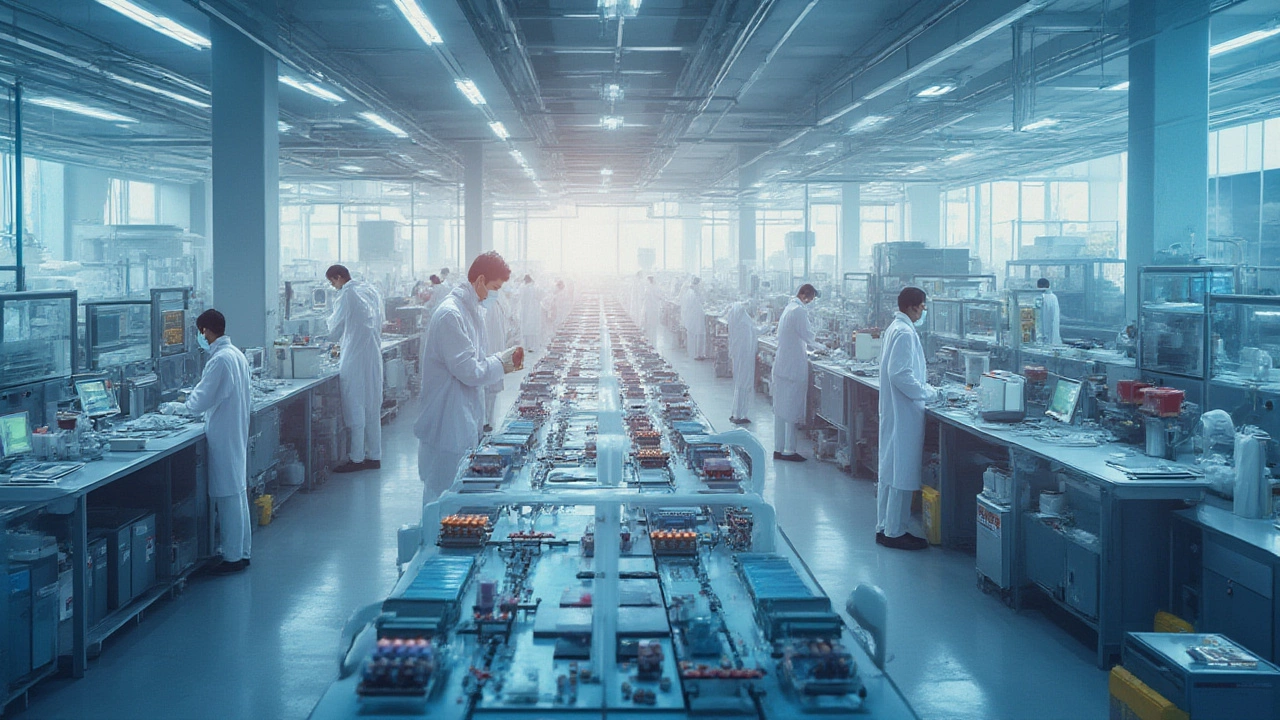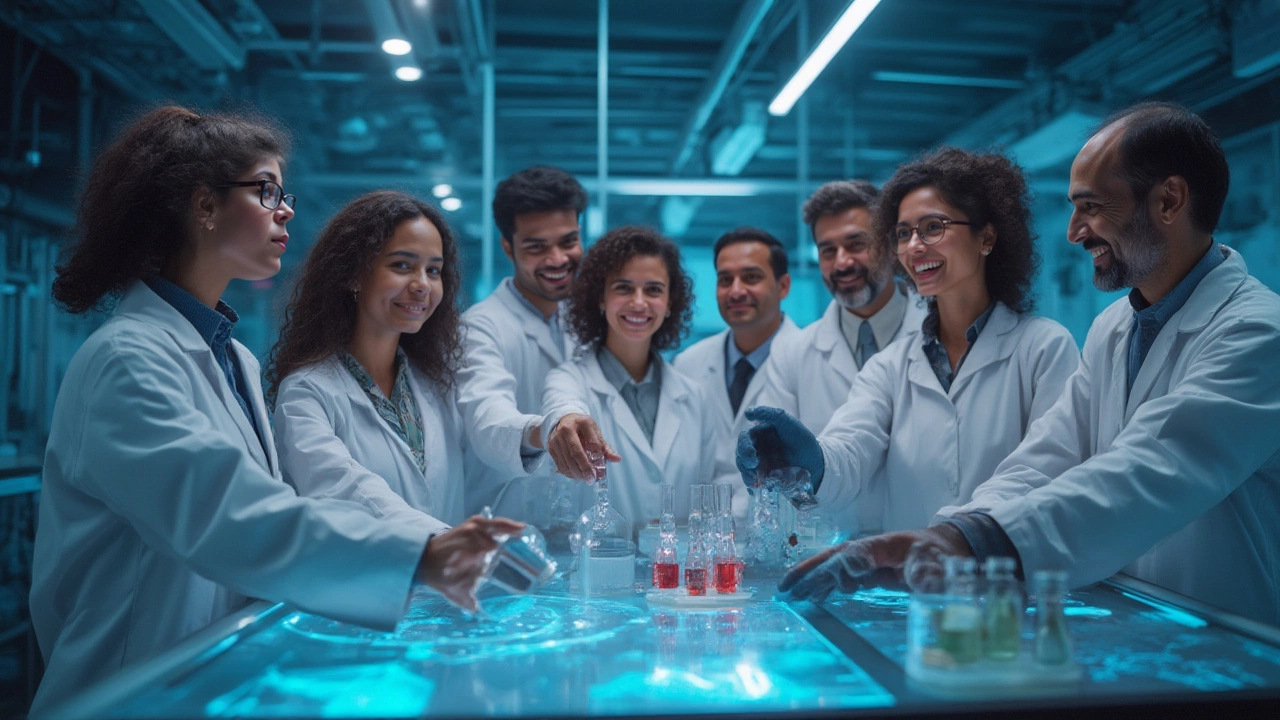 Jul, 5 2025
Jul, 5 2025
Picture this: India fills over 20% of the world’s generic pill bottles. That’s a huge chunk, but have you ever wondered which Indian city is powering this global impact? It’s not Mumbai, as many guess, and not New Delhi either. The true heart isn’t even on the west coast — it’s Hyderabad, the pharma capital of India. If you want to know why, you’re about to get the whole story: deep roots, eye-popping stats, big names, and some tips on how cities jostle for the pharma throne.
India’s Pharma Revolution: The Rise of the “Bulk Drug Capital”
If you rewind to just a few decades ago, India wasn’t even on the map when it came to global pharmaceuticals. The 1970s changed that, when the Patent Act allowed Indian companies to reverse-engineer branded drugs and churn out cheap generics. That’s when Hyderabad, a city already known for its IT boom and spicy biryani, started cooking up more than just food.
Hyderabad’s rise started with a handful of ambitious entrepreneurs. Dr. Reddy’s Laboratories, Aurobindo Pharma, and Divi’s Laboratories set up shop there in the 1980s. These names still dominate, and they’re globally recognized now. By the 2000s, the city’s “Pharma City” in the outskirts turned into ground zero for not only pills but also vaccines, active pharmaceutical ingredients (APIs), and even research and development.
What gives Hyderabad the edge? First, it sits at the crossroads of India. Supplies can move out fast, both domestically and, through the nearby ports, across the globe. Second, Hyderabad’s government went all-in: they developed pharma parks that cut overheads for companies (think shared labs and infrastructure). Third, colleges and universities churned out a pipeline of chemists, engineers, and scientists eager to join this booming sector.
A recent government report from 2024 stated that Telangana State, Hyderabad’s home, ships out around 35% of the pharma production for all of India. Want that in numbers? In 2023, exports from Telangana topped $5.2 billion — mostly pharma. The state has over 800 pharmaceutical manufacturers, with at least 400 clustered in Hyderabad itself. No other Indian city comes close in both company numbers and export value.
| Metric | Hyderabad (Telangana) | Pune (Maharashtra) | Ahmedabad (Gujarat) |
|---|---|---|---|
| Pharma Companies | 400+ in Hyderabad, 800+ in state | 90+ | 150+ |
| Annual Export Value (2023, USD) | 5.2 Billion | 1.1 Billion | 2.6 Billion |
| Main Focus | APIs, generics, vaccines, biotech | Formulations, generics | APIs, generics |
The numbers are clear: Hyderabad is on top. But what’s just as interesting is how the city keeps that lead when both Gujarat and Maharashtra are biting at its heels.
Hyderabad: India’s Pharma Powerhouse and the Secrets Behind Its Success
How does a city get to call itself “Genome Valley”? Hyderabad isn’t just churning out generic paracetamol; it’s also making waves in biotech and vaccines. During the COVID-19 pandemic, Bharat Biotech in Hyderabad developed Covaxin, one of the world’s first indigenous COVID vaccines. This was a big deal, not only for the city but for the whole country.
Hyderabad is home to India’s largest pharmaceutical industrial cluster: the Jawaharlal Nehru Pharma City (JNPC) and the upcoming Hyderabad Pharma City — a planned project that, when done, will be the single largest pharma cluster in the world, spread over an area bigger than 19,000 football fields. Sounds insane, right? The project aims to attract investments north of $10 billion and generate over 500,000 jobs. Construction cranes dot the horizon, and new labs and factories spring up each month.
R&D has become a real game-changer in Hyderabad. While older pharmaceutical companies focused mainly on manufacturing, the new kids on the block — think Suven, GVK Bio, and Laurus Labs — pour resources into research, biotech, and even proprietary molecule development. Genome Valley, a 600-acre high-tech cluster north of the city, now hosts more than 200 companies, half international. Pfizer, Novartis, and Sanofi all have a presence there.
What keeps the momentum going? For one, the city has an unrivaled talent pool. Hyderabad is known for its universities and research centers, including the University of Hyderabad, NIPER, and the Indian Institute of Chemical Technology. Local graduates often skip the usual brain drain and stay to work in the growing ecosystem.
Supply chains here are tight. Labs, warehouses, and export facilities line major highways, so materials don’t sit around gathering dust. In interviews, pharma executives mention how streamlined logistics in Hyderabad let them move products from lab to market faster than just about anywhere else in India. Plus, government incentives — like tax holidays, low water charges, and single-window permits — cut red tape and make it easier for new pharma start-ups to hit the ground running.
- Tip: If you’re considering a pharma career, Hyderabad’s the place to be for hands-on R&D.
- Tip: Many pharma parks have open innovation challenges — keep your eyes peeled for internships or collaborative hackathons around Genome Valley.
- Tip: Local biotech meetups in Hyderabad are a good place to network with company recruiters and entrepreneurs.
All of this is why Hyderabad often makes global “Top 10 Cities for Pharma Manufacturing” lists, right up there with Basel, Boston, and Shanghai. But the story’s not just about one city — India’s pharmaceutical muscle comes from fierce city rivalry.

Competing Cities: How Maharashtra and Gujarat Stack Up
So why do people sometimes think of Mumbai or Ahmedabad as the true pharma capitals? Well, both cities have their own big claims. Mumbai — really, the wider state of Maharashtra — is bustling with pharma giants like Sun Pharma, Lupin, and Cipla. A lot of these firms’ headquarters and R&D teams are in Mumbai or Pune, while the manufacturing plants sit in the countryside around Aurangabad or Nashik. Mumbai is the ultimate finance and marketing capital, but not the place where the most pills are made.
Ahmedabad, in Gujarat, is special for its bulk API production. Zydus Cadila and Torrent Pharma call this city home, and if you check the stats, Gujarat ranks number one for pharmaceutical investments, thanks to pro-industry government policies, smooth power supply, and lower land costs. Places like Ankleshwar and Vapi, small towns with massive chemical complexes, feed much of India’s raw pharma material needs.
But here’s what sets Hyderabad apart: concentration and ecosystem. While Gujarat spreads its industries across dozens of cities, Hyderabad focuses hundreds of companies and thousands of experts in a tight cluster. You really can walk down some streets in Genome Valley and find researchers from half a dozen different countries swapping ideas in a neighborhood café.
Still, competition isn’t a bad thing. Maharashtra and Gujarat have forced Hyderabad to keep innovating. Gujarat recently invested billions into pharma parks and set up “plug-and-play” zones — where a company can rent a factory, plug in their machines, and start making products without a hitch.
There are also upcoming hotspots that might surprise you. Bengaluru, famous for tech, is making big bets on pharma and biotech startups. Visakhapatnam is increasingly home to big pharma exporters. But for now, if you want the dense, buzzing pharma action, Hyderabad leads the pack.
| City | Notable Pharma Companies | Key Industry Focus |
|---|---|---|
| Hyderabad | Dr. Reddy's, Aurobindo, Bharat Biotech, Laurus Labs | Generics, APIs, Vaccines, Biotech |
| Mumbai | Sun Pharma, Cipla, Lupin | Generics, R&D Headquarters, Biopharma |
| Ahmedabad | Zydus Cadila, Torrent Pharma | APIs, Chemical Synthesis, Formulations |
The Future: What’s Next for India’s Pharmaceutical Capital?
With healthcare supply chains still shaky after the pandemic, the world is demanding more reliable manufacturers. Hyderabad is betting hard on the future. The upcoming Hyderabad Pharma City is expected to add over 1,200 new companies within a decade and double the state’s export numbers. By 2030, estimates say Hyderabad alone could contribute nearly 45% of India’s pharma output.
If you pay attention to industry news, Hyderabad isn’t just sticking with bulk drugs and generics. Cell and gene therapies, CRISPR research, and personalized medicine — the stuff that sounds like sci-fi — are all being developed in those Hyderabad labs right now. International heavyweights like Novartis and Bayer are pouring millions into new research campuses here.
But there are challenges. Environmental concerns are growing: chemical waste, water pollution, and land usage issues get louder every year. Government action is tightening: Telangana passed new pollution control measures in 2024, and companies are feeling the heat. Start-ups are experimenting with green chemistry, and some big firms have pledged to go “zero-discharge” on all their new plants within five years.
For people hoping to work in pharma, the options here are vast. There’s huge demand for data scientists to crunch trial results, chemical engineers, plant managers, marketing strategists who know international regulations, and logistics experts. Salaries, too, are among the best in India for fresh grads — R&D scientists with just a year or two under their belts can pull in six-figure annual pay (in rupees, of course, but still impressive for India’s job market).
Want a front-row seat to India’s ongoing pharma boom? Hyderabad is where you go. Whether it’s networking in Genome Valley, landing a job at Bharat Biotech, or watching a billion-dollar experiment unfold in real time at Pharma City, nowhere else in India matches the energy. The “City of Nizams” has become the king of pharma — and if the numbers keep climbing, it’s likely to keep that crown for years.